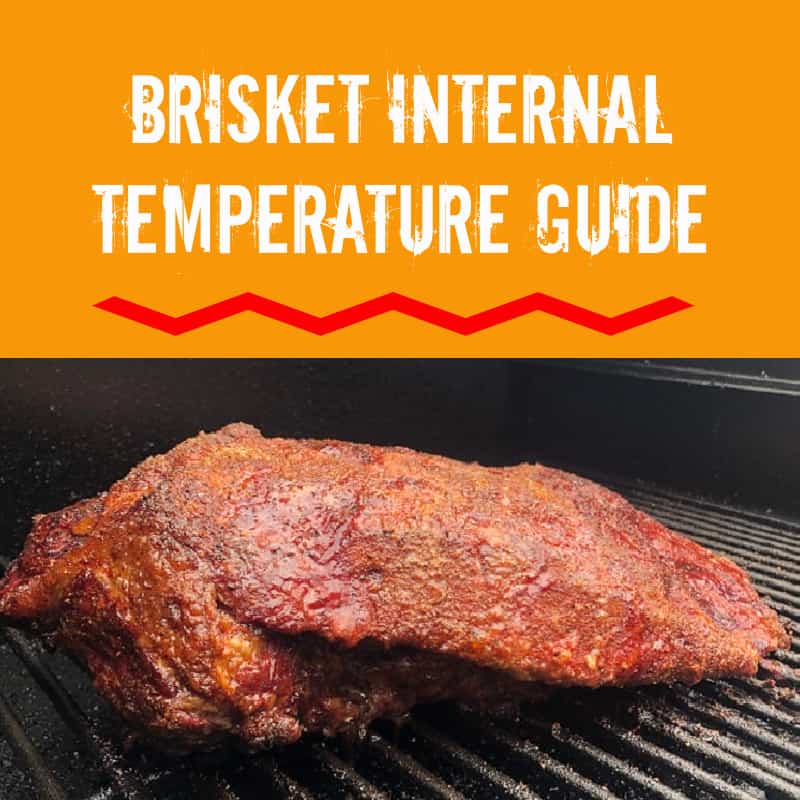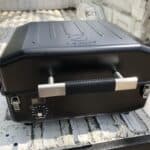Determining when a brisket is done cooking can be a little tricky but this article is designed to give you the confidence you need to pull it from the pit at the right time. One way of checking for doneness is by measuring the internal temperature of the brisket but the question is, “At what internal temperature is the brisket done?”
The answer is, “The brisket is done when it reaches an internal temperature of 203F when measured in the flat portion.”
It is important to measure the temperature in the flat instead of the point. The fatty point will cook faster and show a higher internal temperature than the lean flat.

While knowing the target internal temperature is a great first step there are two other critical factors you need to account for when determining when the brisket is done. Those factors are:
- Quality of the Brisket
- The Resting Period
Let’s look at these two other factors in more detail.
Quality of the Brisket Impacts Finished Temperature
Shooting for a specific internal temperature is a mistake many people make when they are learning how to smoke a brisket.
The TRUE test of when a brisket is ready to come off the pit is when your thermometer is able to easily slide through the meat in the flat section. This is what is known as “probe tender” and it is the mark that you should be shooting for instead of a temperature.
The reason you should be going by tenderness instead of temperature is that different types of brisket reach the Probe Tender state at different temperatures. A Prime Angus brisket from Costco should be probe tender at 203F but other types of brisket will not.
The following types of brisket will often reach the Probe Tender state at an internal temperature of 190-195F because they are inherently tender to start with.
- Wagyu Brisket
- Wet Aged Brisket
- Dry Aged Brisket
In contrast, a select grade Grass Fed brisket will often need to reach an internal temperature of 205-210F to become probe tender as this type of brisket is inherently tough.
Please note that while the brisket is ready to come off the smoker when it is probe tender that is NOT when the brisket is done.
The Brisket is Not Done Until it Rests
It takes a long time to cook a brisket and a lot of folks get impatient and rush the process. You can speed things up by wrapping the brisket when it hits the stall but you should absolutely not skip the final step of the cook which is to rest the brisket.
According to Myron Mixon’s brisket recipe, resting the brisket is the second most critical step in the process topped in importance only by the quality of the beef.
To properly rest the brisket you need to:
- Take the wrapped brisket off the pit.
- Place the brisket into a small cooler lined with cloth towels.
- Close the lid and let the brisket for at LEAST one hour and up to four hours.
There are two reasons people give for the importance of resting the brisket.
- Moisture Distribution
- Continued Cooking
Moisture Distribution
I am not sure that I buy this explanation of the importance or resting a brisket but I will share it for the sake of completeness.
The general idea is that all of the heat that has been applied to the brisket has caused the moisture inside the meat to be pushed up and inside the meat leaving the outer edges of the brisket dry and tough.
When you rest the brisket it gives the meat time to relax which lets the moisture redistribute throughout the meat making everything juicy and tender.
Continued Cooking
This is why I think the resting period is critical.
When you put the brisket into the cooler it is still hot and stays hot the entire time it is resting. Typically the internal temperature of a brisket that has been resting in a well insulated cooler will drop to about 175F after four hours of resting.
During the time the brisket is in the cooler the heat within the meat continues to break down and tenderize the brisket. This is a soft, gentle cooking step that is almost like an internal sous vide process.
Temperature, Tenderness and Resting Determine When a Brisket is Done
The main point of this article is to provide you a rough target internal temperature to shoot for with your brisket with the strong advice to not let temperature be your only guide.
Don’t be afraid to take the brisket off the pit either before or after the target temperature of 203F because what is more important is that the meat is probe tender and that temperature is going to be different for different types of briskets.
More critically, do not make the mistake of thinking that just because the brisket has hit a target temperature that it is done. The brisket is only truly done after it has been rested for at least one hour.


